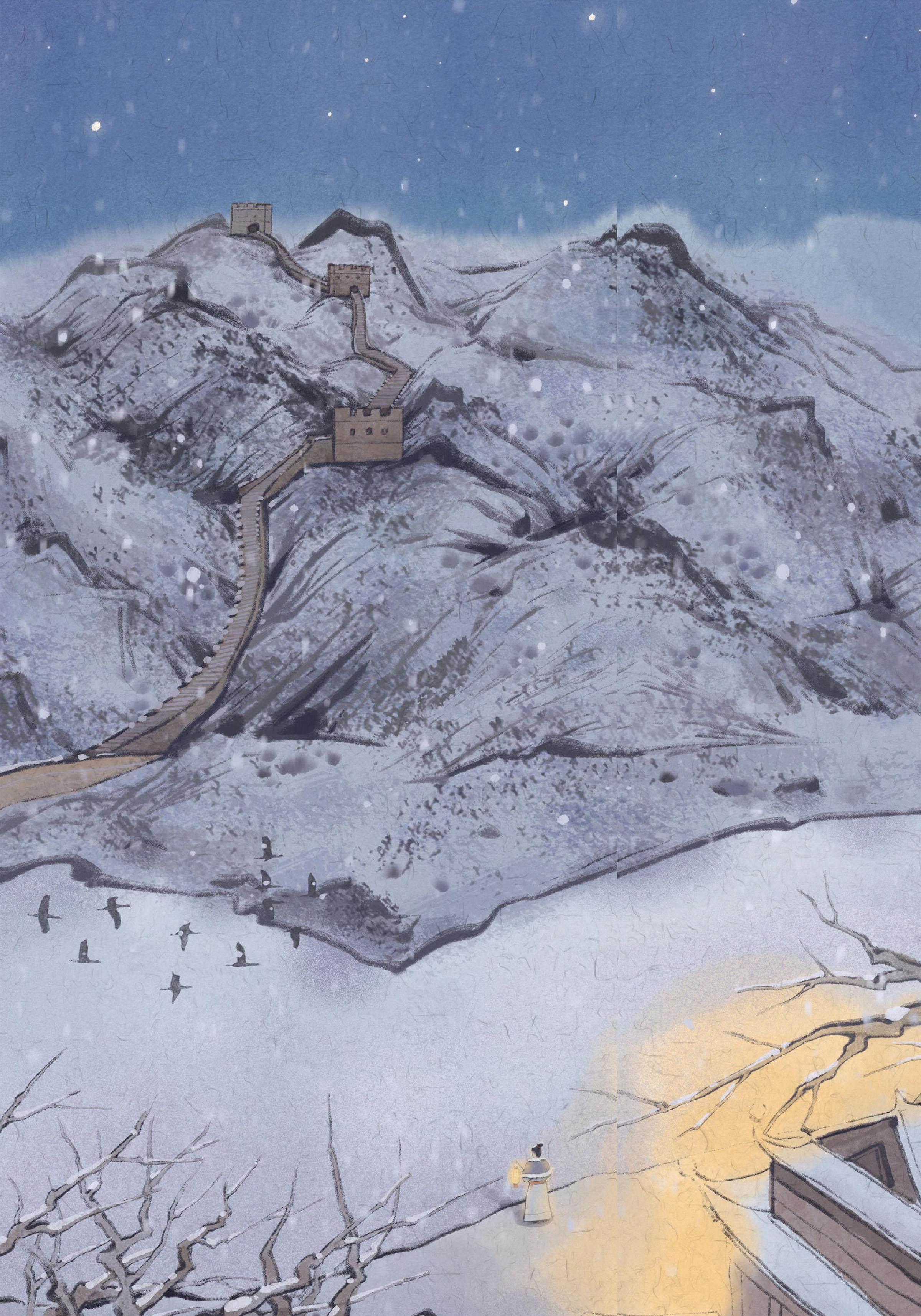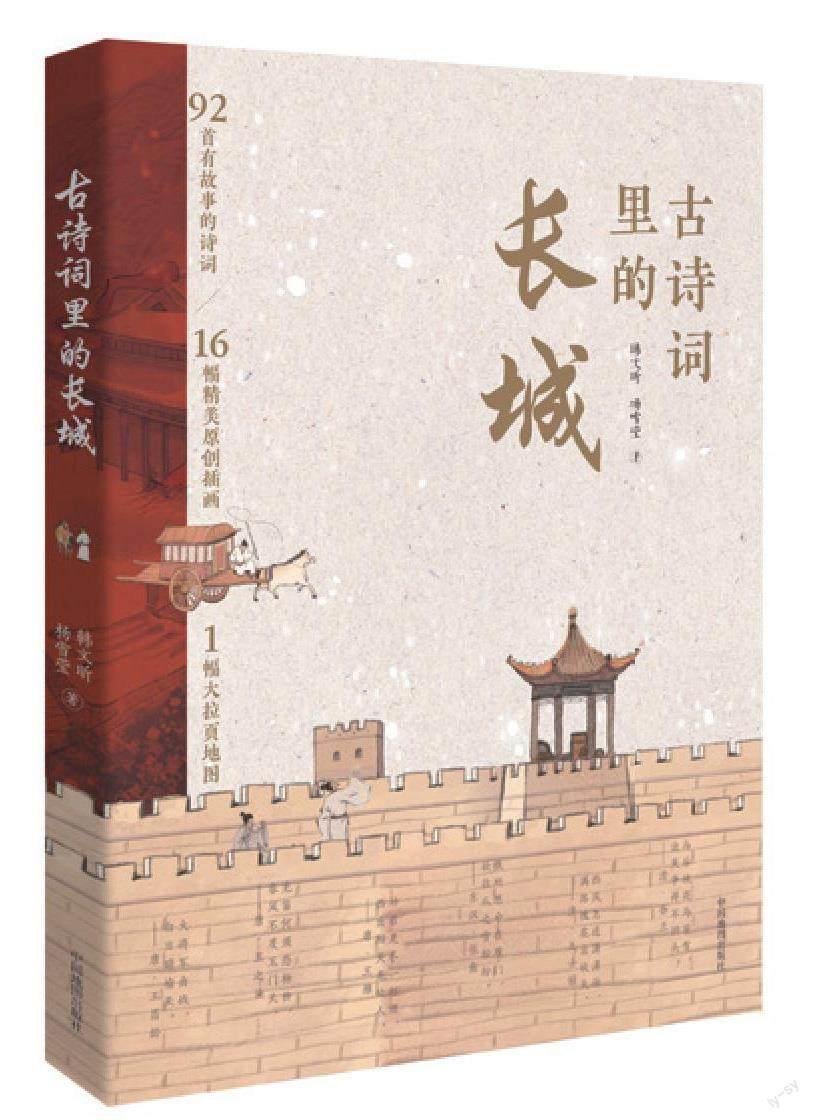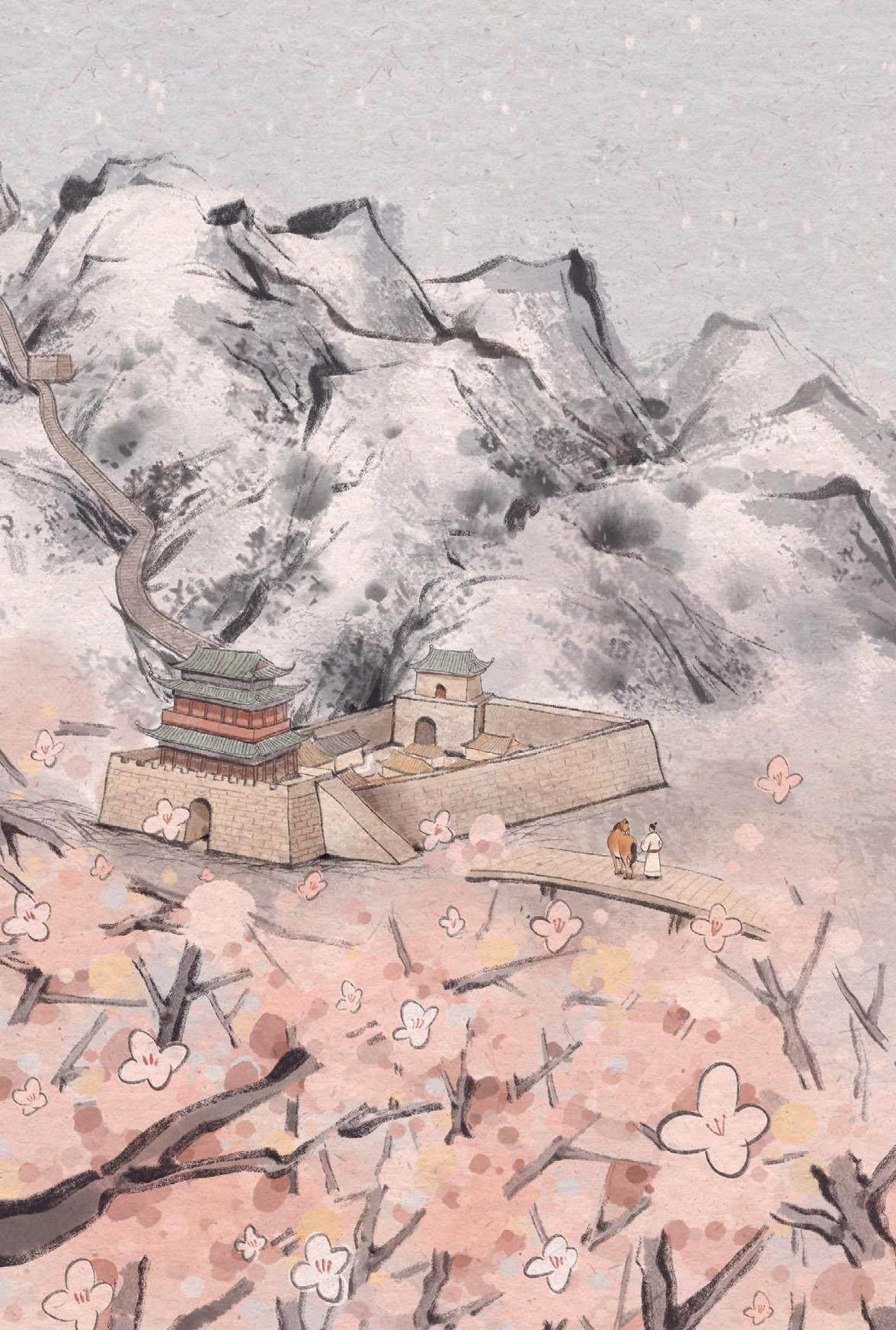Shanhai Pass



Han Wenxin
Han Wenxin graduated from the Chinese Department of Wuhan University with a masters degree in ancient literature and is currently a university teacher.
Yang Xueying
Yang Xueying graduated from Wuhan University with a master of Arts in Ancient Chinese Literature and currently serves as a Chinese language teacher at the East Campus of Shenzhen Senior High School.
This book takes 16 pass and fortress cities along the Great Wall as key locations and presents a selection of over ninety poems related to these locations in chronological order from east to west. Through the interpretation of these poems, the book unveils the historical stories and complex emotions embedded within them. Readers can witness the multifaceted image of the Great Wall in different eras and classic literary works, breaking the stereotypical impression of the Great Wall and gaining a fresh understanding of this ancient monument.
The Great Wall in Ancient Poetry
Han Wenxin, Yang Xueying
Sinomaps Press
February 2023
58.00 (CNY)
Shanhaiguan, also known as Shanhai Pass, is located 15 kilometers northeast of Qinhuangdao City in present-day Hebei Province. It is situated at the eastern end of the Liaoxi Corridor and was a crucial passage between North China and Northeast China. With its strategic military significance, Shanhaiguan has been a contested area throughout history.
Shanhaiguan was formerly known as Yuguan (榆關(guān)) and Yuguan (渝關(guān)). It originated from Yuguancheng, a city built during the third year of the Sui Dynasty (583 CE), which was located in the east of Funing County,? Hebei Province, slightly to the west of the present-day Shanhaiguan in Qinhuangdao. Since the Tang Dynasty, many famous poets have mentioned Yuguan in their classic poems. The term “Yuguan” thus became a representative term for the entire frontier region. In the 14th year of the Ming Hongwu reign (1381 CE), General Xu Da built a city and established a pass here, naming it “Shanhaiguan,” which literally means “Mountain and Sea Pass.” True to its name, Shanhaiguan faces the Yanshan Mountains to the west and overlooks the Bohai Sea to the south. It is located at the eastern end of the Ming Great Wall, complementing Jiayuguan at the western end. As a vital “throat of the border district and safeguard of the capital,” Shanhaiguan guarded the Liaoxi Corridor and protected the North China Plain. With its rich historical heritage, grand architectural style, and breathtaking mountain-sea scenery, Shanhaiguan became the deserving “head” of the Great Wall dragon and a place for scholars and literati to express their feelings about the borderlands.
Huanghua City
Huanghuacheng, also translated as Huanghua City, was first built in the fourth year of the Ming Jingtai reign (1453 CE) and served as the commanding authority of the Huanghuaru District. It is located in Huanghuacheng Village, Jiuduhe Town, about 35 kilometers northwest of Huairou District in present-day Beijing. Because of its administrative jurisdiction, Huanghua Town used to be called “Huanghua Town City” and is now commonly referred to as Huanghuacheng. Huanghuacheng Pass is situated at the northern gate of the capital, overlooking Gubeikou to the east and adjacent to Juyong Pass to the west. Located at several crucial passageways, Huanghuacheng is of great strategic importance. It played a significant role in safeguarding the “Thirteen Tombs” of the Ming emperors. Perched on a ridge and surrounded by a lake, Huanghuacheng is not only picturesque but also magnificent.
The area boasts blooming flowers in three seasons, with lucid waters, lush mountains, and diverse landscapes throughout the year. The water of Haoming Lake naturally divides the three sections of the Great Wall at Huanghuacheng, creating a unique spectacle of the Great Wall immersed in water and water submerging the ancient city wall, which is unprecedented in the country. The ancient chestnut orchards planted by Ming soldiers guarding the city are still preserved on the side of the city. Those soldiers dedicated themselves to both guarding the border and cultivating the land, leaving behind pleasant traces with their diligent efforts. There are more than 40 ancient chestnut trees in this area, with an average diameter at breast height of over 90 centimeters and an average age exceeding 400 years. These ancient trees, with their intertwined roots and diverse forms, have weathered countless winds and frost while remaining vigorous and lush. The combination of guarding the mausoleums, the submerged Great Wall, and the ancient chestnut orchard makes Huanghuacheng an enchanting place with three unique attractions. Among the many passes of the Great Wall, known for their majesty and steepness and even a little bit of harshness, the soothing and pleasant beauty of Huanghuacheng is really unique.
Juyong Pass
Juyong Pass is one of the most famous passes along the Great Wall. It is located in Nankou Town, Changping District, approximately 46 kilometers northwest of present-day Beijing. Juyong Pass is situated at Jundu Mountain Passage, the border between the western Taihang Mountains and the northern Yanshan Mountains. Jundu Mountain Passage is the eighth of the “Eight Great Passages of Taihang.” There are two major mountain ranges towering over Guangou, and the mountains are steep and sharp, making it a major obstacle between the north and the south. Juyong Pass is located at the junction of the Inner Mongolia Plateau and the North China Plain, resulting in the vastly different scenery seen out of the pass and in the pass, evoking deep emotions among travelers. Juyong Pass boasts a long history. As far back as the Warring States Period, the state of Yan established Juyong Pass. It is said that during the construction of the Great Wall by Emperor Qin Shi Huang, people were relocated here, giving the pass its name, in which “ju” means “relocation” and “yong” means “hard labor.” In the first year of the Zhenyuan reign (1153 CE) of the Jin Dynasty, after the capital was moved to Zhongdu (located in present-day Beijing), the importance of Juyong Pass increased. Transforming from a regular customs checkpoint to a guardian of the capital, it became the northern gateway to the imperial city. After the Qing Dynasty, both the interior and exterior of the Great Wall were incorporated into a unified territory. As a result, Juyong Pass gradually ceased to serve as a military facility, transforming over time into a natural village.
As a significant pass along the Great Wall, Juyong Pass has been a prominent subject of poems, particularly after the Jin Dynastys capital relocation. These poems reflect the social landscape of each historical period and convey the complex emotions of the poets.
Zijing Pass
Zijingguan, also called Zijing Pass, is located on Zijing Ridge, northwest of Yixian County, Hebei Province. The pass city stands near mountains and water, surrounded by numerous peaks. Zijingguan is situated on the Puyin Passage, one of the essential routes from the North China Plain into the Taihang Mountains. It is the seventh of the “Eight Great Passages of Taihang,” along with the sixth, Feihu Gate, and the eighth, Jundu Passage, forming a solid defensive line and barrier, protecting the capital. “Soldiers rest in armor with a bow as a pillow, their heads reflecting the moonlight like scales.” Qu Zhongshus poem “Defending Zijingguan,” written during the Ming Dynasty, shows that even during an era of imperial unity and peace, the generals did not relax their defense of Zijingguan in the slightest. Zijingguan has a long history and was built during the Warring States Period.
Along with Feihu Gate, it is a well-known ancient battleground and a significant military location. Throughout history, numerous battles have occurred in this region. Emperor Guangwu sent Ma Yuan to repel the Wuhuan people at Zijingguan during the Eastern Han Dynasty. Emperor Taizu of the Yuan Dynasty once passed through Zijingguan and defeated the Jin Dynastys forces. Li Zicheng, a rebel leader during the late Ming Dynasty, also attacked and conquered the pass city.

